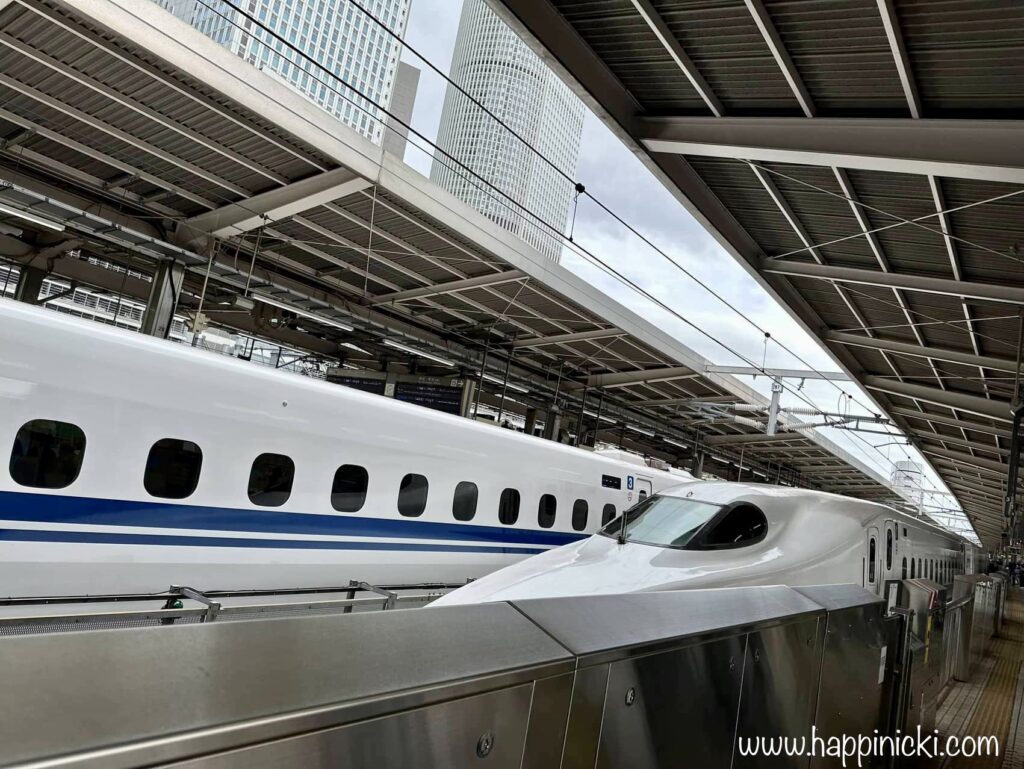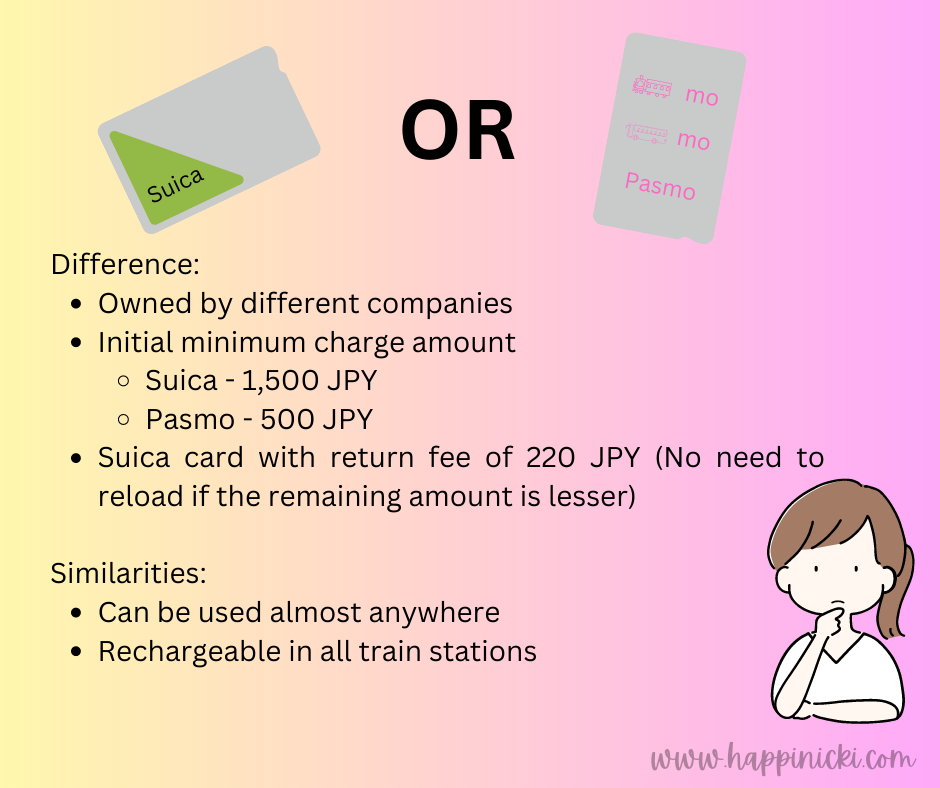Japan train system – Here in the Philippines, we don’t have a complex train system. We only have to choose between LRT or MRT, depending on the places you want to go, but they won’t get you to Mindanao. But in Japan, you can reach almost every part of the country by getting to know the Japan train system map.
When I first traveled to Japan, I didn’t do any research about what to do or how to get there. My friend did all the research and it was she who taught me the best tips on how to navigate through Japan, especially its railway system.
When it was time for me to travel with hubby 5 years ago, I found out there was a lot to learn before you can easily travel to reach places and provinces in Japan. You have to think about the best route to get to the location with the cheapest fare and the shortest time.
So, I figured I’d write a post about the Japanese train system so you don’t have to experience what I and my friend did to travel to Japan independently. I also have the best theme park tips and tricks on how you can get the best out of your money.
Don’t forget to use Klook promo code HAPPIKLOOK before check out to get discounts on your bookings! Not sure when to use the code yet? Redeem NOW, and use LATER!
Types of trains in Japan
There are over 100 private companies operating Japan’s train system.
But don’t worry, you don’t have to memorize the list of railway lines in Japan to travel seamlessly. What you need to know are the 5 different types of trains you will choose to ride.
To start off, the 5 types of train in Japan are Shinkansen, limited express, express, rapid, and local trains. These 5 types of Japan trains differ in the speed and the places they stop. Let’s get to know them one by one.
Shinkansen

The fastest among the Japan high-speed rail system called the Shinkansen, will also take you from city to city and is also the priciest. You can go from Tokyo to Osaka in just 2 hours and 30 minutes thanks to Shinkansen, or the bullet train.
If you ride the local trains when traveling from Tokyo to Osaka, it will take you 9 hours. And you have to transfer trains 5 times to reach your destination. While it might save you a little bit of money, it’s not worth the time and effort.
It’s especially a hassle when you have to transfer trains when you are bringing heavy baggage with you. But even if you know how to travel light, it won’t be the easiest when you have to walk miles just to get from one train to another.

The 9 shinkansen trains travel at 240 – 320 kph (149 – 198 m/h). There are 6 major Shinkansen levels and they differ in speed and stations. The fastest shinkansen, Nozomi, stops at the largest stations. Note that you cannot use JR Pass to board it as of writing.
Hikari is next to Nozomi when it comes to speed and you can use your JR unlimited pass to ride it. The third fastest shinkansen is the Kodama, which stops at more stations than Nozomi and Hikari. It also accepts the use of JR Pass.
Just like Nozomi, Mizuho Shinkansen is not covered by the JR Pass (which will soon be, check below “JR Pass price increase”), so you have to buy a separate ticket to ride. Lastly, Hayabusa and Sakura are both accessible using the JR Pass.
Limited Express
Traveling at a speed no lesser than the Shinkansen is the Limited Express. Also known as Special Express, the Limited Express stops only at the major train stations. You can experience the same seat quality as the Shinkansen when you ride the Limited Express.
However, you have to take note that you have to pay more when you ride a Limited Express. Because these trains in Japan will skip a few stations letting passengers reach the most commonly used stations faster.
Klook.comExpress
If you decided to buy JR Pass, then you can ride the Express trains without a hassle. This type of Japanese train stops at a few more stations than the Limited Express. So it will take a bit longer time to reach your desired station when you ride the Express train.
Rapid

If you can’t reach your destination through the Express train, you might be able to do so with a Rapid train. Without paying an additional fee, you can ride the Rapid Japan train and get to your desired station but with a little bit longer time than the Express train.
Local
The slowest in the Japanese rail system is the Local train. This type of train stops at each one of the stations so if you aren’t sure whether the Rapid or the Express train stops at a certain station, you can board the Local train and get to enjoy quite a view as you pass and stop at every Japan train station along the line.

Maglev train
Have you heard about Maglev or the magnetic levitation trains? It’s my first time hearing (reading, rather) about it and it will soon surpass the Shinkansen as the fastest train.
I read from Japan Railway official website about the innovative train Japan is supposed to produce in 5 years!
The Central Japan Railway Company has been working with the Railway Technical Research Institute and started to develop SC Maglev, or superconducting magnetic trains in the 1970s. Using magnets, the Maglev train exceeds the speed of the Shinkansen as seen in trial tests.
With the Maglev train, you will be able to travel from Tokyo to Nagoya within 40 minutes. That’s even faster than riding the plane! It’s expected that by 2030, people can board the Maglev train and move from city to city in a short time.
Is JR Pass worth it?
When I was making our itinerary, it took me lots of sleepless nights to finally decide not to get one. Why? After computing on and on, paying the JR Pass price is not worth our trip. We traveled with our toddler and it didn’t allow us to leave the hotel or Airbnb early.
We usually went out at about 10 in the morning and got home at about 9 in the evening. We weren’t able to visit different cities within a day, so it wasn’t wise to get a JR Pass for each of us.
Now, if you will ask me, “When will a JR Pass save you money?” the answer is by manual counting. You divide the total amount of your JR pass by the number of days (whether it be 7, 14, or 21) and check how many times you will ride the train that day.
Klook.comJR Pass price increase
While many may think that buying a JR Pass can help them save money, in the future it might not be the same anymore. The Japan Railways company has announced recently its price increase which might take effect by October this year.

For ordinary cars, there is about a 70% price increase, and even more for Green cars. Green car riders have to pay about 80% more when they avail of the JR Pass. The massive price increase allows JR Pass holders to ride the Nozomi and Mizuno trains, which weren’t available at their current price.

Pasmo or Suica? Which is better?

So, you’ve decided not to buy JR Pass and planned to use reloadable cards instead. You come across Suica and Pasmo cards, and now you are torn more than ever. What’s better, Pasmo or Suica?
Based on my understanding, the difference between the 2 cards is that you have a return fee of 220 JPY with a Suica card, and none with a Pasmo card. JR East manages Suica cards, while the Pasmo cards are owned by other private companies.
You can use both Suica and Pasmo to pay for bus and train rides, and both are accepted at convenience stores. And you can reload them at all train stations. Both cards have a refundable card deposit of 500 JPY.
During our stay, since the one available near our Airbnb was a Pasmo card, that’s what we purchased. Thanks to that, we didn’t have to choose which one to buy.
Japan train system conclusion
I did my best to have the Japan train system explained. Whichever you plan to use for your Japan travel, be sure to enjoy every bit of your stay. And if ever you feel like you made a wrong decision, it’s best to accept that mistakes are what makes us human.
And that learning from our mistakes will make us better in the future. Just relax, and enjoy your Japan independent travel to the fullest. To more travels in the future!
Disclosure: You may find affiliate links in this post and I may get a small commission without extra cost to you. In return, I’ll give you valuable life hacks and relatable real-life experiences for FREE!













